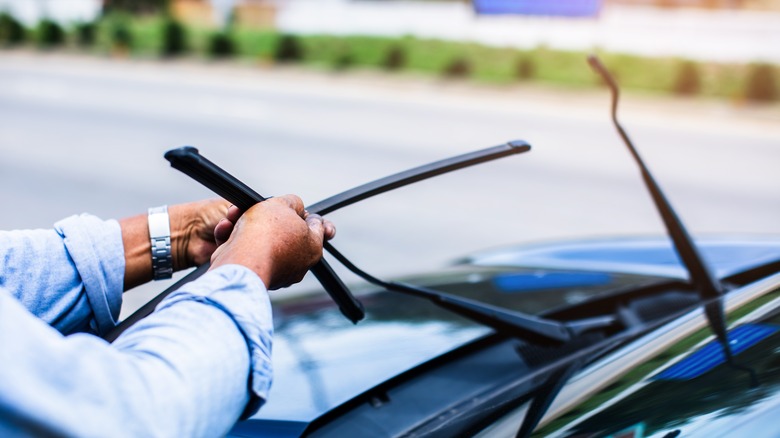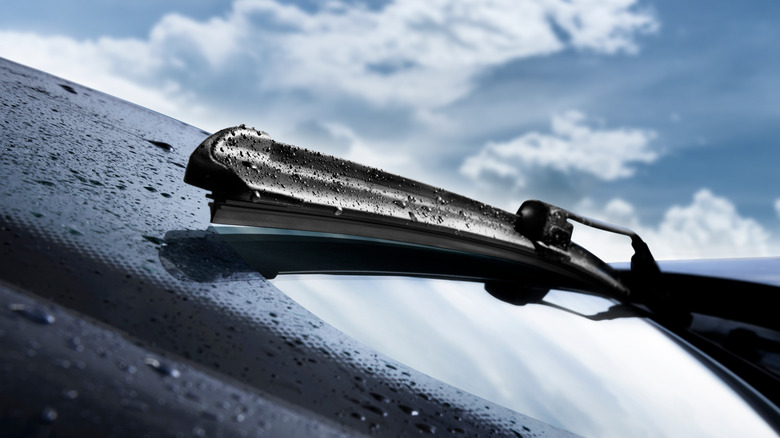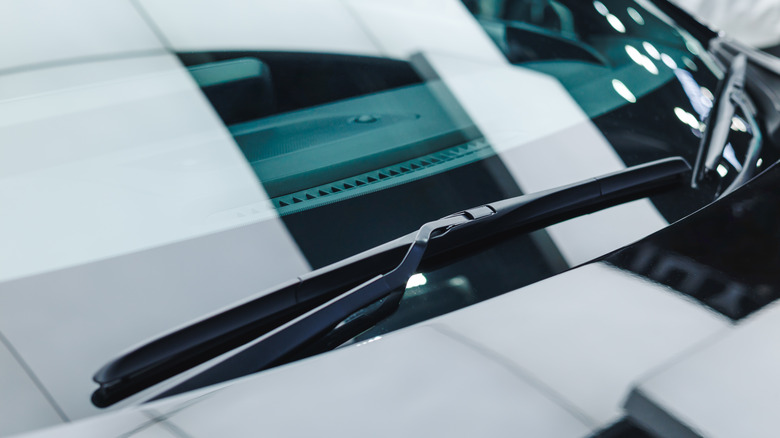Silicone Vs Rubber Wiper Blades: Is One Really Better Than The Other?
We may receive a commission on purchases made from links.
Knowing how often to replace your windshield wipers is part of regular car maintenance. At the same time, familiarizing yourself with the difference between the various types of wiper blades is also important, since different solutions come with varying performance, durability, and maintenance needs. The two most common choices include silicone and rubber blades, and is one really better than the other? In most instances, silicone blades both perform better and last longer than rubber blades.
According to testing carried out by Car and Driver, silicone blades were found to last twice as long as their standard rubber counterparts, while also performing better in harsh weather conditions. On the other hand, rubber blades are more affordable and more readily available. So, if lower upfront costs and availability are more important to you than longevity and performance, then rubber blades are likely going to suit your needs better.
Material science of silicone wiper blades
On the topic of why silicone is better than rubber, a review published in Progress in Rubber, Plastics, and Recycling Technology notes that silicone structure provides greater resistance than rubber. In other words, external factors, such as heat, weathering, and UV rays, are less harmful to silicone and thus enable it to last longer. Another benefit is that silicone materials combine organic and inorganic characteristics for a best-of-both-worlds effect. This means that silicone benefits from the flexibility associated with rubber while also being more stable.
Material properties make silicone blades better at repelling water because of their hydrophobic qualities, and because the blades themselves can deposit a thin film of silicone onto the windshield for the same purpose. Moreover, silicone is found to be quieter while in operation, and if your rubber windshield wipers are squeaking, a good idea would be to lubricate them with silicone-based wiper lubricants. Lastly, it's worth noting that extreme temperatures aren't as intense on silicone blades as they are on organic rubber because these can resist stiffening and cracking better.
Are silicone wipers worth the extra costs?
On average, silicone wiper blade prices are two to three times higher compared to rubber blade solutions, but the gap is narrowing with more and more solutions on the market. For example, the rubber AERO Voyager Premium All-Season OEM Quality Windshield Wiper Blades – an Amazon Best Seller — comes with a price tag of $16.99 for a pack of two while the silicone-based Rain-X Latitude 2-In-1 Water Repellent Wiper Blades – also a Best Seller — costs $36.98 for two. Be that as it may, since silicone blades can last twice as long, the replacement frequency is lower. Moreover, if you are able to benefit from any discounts and special offers, the prices you finally end up paying can be more or less the same.
Another important factor to keep in mind is the warranty coverage, as some blades only come with six months of protection, while others can extend that coverage up to a year. So, if you do decide to upgrade and replace your windshield wipers with a set of silicone blades, you can expect fewer replacements, better performance in extreme weather, and a cleaner windshield. All of that for a price difference that can quickly balance out when you consider all of the benefits and shop wisely.


